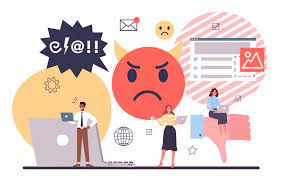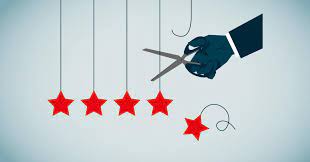Reputational damage refers to harm or negative impact to an individual’s or organization’s reputation or image. This harm can be caused by various factors, such as negative publicity, negative reviews, scandals, legal actions, unethical behavior, or poor customer service, among others.
Table of Contents
ToggleWhat is Reputational Damage?
Reputational damage can have significant consequences, including loss of trust, credibility, and business opportunities. It can also lead to financial losses, such as decreased revenue or market share, increased costs of advertising or public relations efforts to repair the damage, and legal costs related to litigation or settlements.
Reputational damage can be particularly damaging in today’s digital age, where news and information can spread quickly through social media and online review platforms. It can be challenging to repair reputational damage once it has occurred, and prevention is often the best approach.
Reasons for Reputational Damage
There are various reasons why an individual’s or organization’s reputation may suffer damage, including:
-
Negative reviews or comments: Negative reviews, comments, or feedback from customers or employees can damage a company’s reputation, particularly if they go unaddressed.
-
Scandals or controversies: Scandals or controversies related to an individual’s or organization’s actions or behavior can cause significant reputational damage.
-
Legal issues: Legal issues, such as lawsuits or regulatory violations, can harm an organization’s reputation.
-
Data breaches or cyber-attacks: Data breaches or cyber-attacks can damage a company’s reputation by compromising sensitive information, such as customer data or intellectual property
Understanding the Impact of Reputational Damage
The impact of reputational damage can be significant and far-reaching, and it can affect individuals, organizations, and even entire industries. Here are some of the ways that reputational damage can impact an individual or organization:
-
Loss of trust: Reputational damage can lead to a loss of trust from customers, employees, investors, and other stakeholders. This can make it more challenging to establish and maintain business relationships, secure investments, or attract new customers.
-
Financial losses: A damaged reputation can result in a decline in sales or revenue, increased advertising or public relations costs, or even the loss of business contracts. It can also lead to a decline in the value of a company’s stock or its market share.
-
Legal issues: Reputational damage can result in legal action, such as lawsuits or regulatory fines, which can be expensive and time-consuming to address.
Corporate Reputation
Corporate reputation refers to the overall image, perception, and standing of a company in the eyes of its stakeholders, including customers, employees, investors, regulators, and the general public. It is shaped by the company’s actions, behaviors, products or services, and communication with stakeholders.
A positive corporate reputation can bring numerous benefits to a company, such as increased customer loyalty, improved brand recognition and value, greater employee satisfaction and retention, and improved relationships with regulators and other stakeholders. It can also help to attract investment, partnerships, and new customers.
Negative Content
Negative content refers to any content, such as reviews, comments, or articles, that portrays an individual, company, or organization in a negative light. It can be posted online, in traditional media, or through word-of-mouth communication.
While it may be impossible to prevent all negative content, there are steps that individuals and organizations can take to manage the impact of negative content:
-
Monitor online mentions: Regularly monitoring online mentions and reviews can help individuals and organizations respond promptly to negative comments or reviews, and address any issues that may arise.
-
Address concerns promptly: Responding promptly to negative feedback or concerns and taking steps to resolve them can demonstrate a commitment to customer satisfaction and help to mitigate the impact of negative content.
-
Be transparent: Being transparent in communications with stakeholders can help to build trust and credibility and mitigate the impact of negative content.
Recognizing a Reputational Crisis
Recognizing a reputational crisis is crucial for businesses to take swift action to manage and minimize its impact. A reputational crisis can occur due to various reasons such as negative media coverage, product recalls, data breaches, or public scandals. Here are some signs that a reputational crisis may be occurring:
-
Sudden increase in negative media coverage: If there is a sudden increase in negative media coverage or social media posts about the business, it may be a sign of a reputational crisis.
-
Decrease in sales or revenue: If there is a sudden decrease in sales or revenue, it may be due to a negative perception of the business or its products/services, indicating a reputational crisis.
-
Increase in customer complaints or negative reviews: A sudden increase in customer complaints or negative reviews can indicate a reputational crisis, and it is essential to address these concerns promptly.
Due to the volume of content available online about highly visible brands and executives, rebuilding reputation takes time. For example, we need to publish topically-relevant content to rebalance and shift the narrative in Google’s index. Then, we develop an SEO strategy to reposition preferred content at the top of your search results.
External Link: https://terakeet.com/blog/seo-strategy/
Signs of a Reputational Crisis
A reputational crisis can have significant negative impacts on a company’s brand image and bottom line. Recognizing the early signs of a reputational crisis can help businesses take timely corrective action to mitigate the damage. Here are some signs of a reputational crisis:
-
Negative media coverage: If there is a sudden increase in negative media coverage or social media posts about the company, it could be a sign of a reputational crisis.
-
Decrease in sales or revenue: A sudden decrease in sales or revenue can indicate that the company’s reputation has been damaged, leading to a decrease in consumer confidence.
-
Increase in customer complaints or negative reviews: A sudden increase in customer complaints or negative reviews can indicate that the company’s products or services are not meeting customer expectations, leading to reputational damage.
-
Legal or regulatory action: An increase in legal or regulatory action, such as lawsuits or investigations, can indicate that the company’s business practices are under scrutiny, leading to reputational damage.
Over 65% of business leaders believe that social media can worsen a brand crisis, which is true in today’s socially-driven world. However, you can enhance the restoration process by taking control of your communication platforms. This means taking charge of conversations on your website affiliated blogs, social media channels, review websites, and any other online platform.
External Link: https://managementhelp.org/blogs/crisis-management/2015/02/07/crisis-stats-you-should-remember/
The Recovery Process
The recovery process after a reputational crisis can be challenging, but with the right approach, it is possible to rebuild a damaged reputation. Here are some steps that businesses can take to recover from a reputational crisis:
-
Take responsibility: It is important to take responsibility for the issue and acknowledge any mistakes that were made. This shows that the company is willing to learn from its mistakes and take corrective action.
-
Communicate effectively: Communication is critical during a reputational crisis. Businesses should be transparent and honest in their communications with stakeholders, including employees, customers, and investors.
-
Develop a plan: Develop a comprehensive plan to address the issue and prevent it from happening again. The plan should include specific actions to be taken and timelines for implementation.
After suffering a reputational crisis, your recovery strategy should be about reshaping the public perception of your company. Part of your strategy should involve using media outlets to issue public statements from company leaders.
External Link: https://muchneeded.com/the-evolution-and-future-of-work-desk/
Consumer Trust and Public Trust
Consumer trust and public trust are closely related concepts that are important for businesses and organizations to understand.
Consumer trust refers to the confidence that customers have in a business or brand. This trust is based on a variety of factors, including the quality of products or services, customer service, and the overall reputation of the business. Consumer trust is important because it can influence purchasing decisions and customer loyalty.
Public trust, on the other hand, refers to the confidence that the general public has in an organization or institution. This trust is based on factors such as transparency, accountability, and ethical behavior. Public trust is important because it can impact a business or organization’s ability to operate effectively and can affect its reputation.
Sales Performance After Reputational Damage
The impact of reputational damage on sales performance can vary depending on the severity and duration of the damage, as well as the industry and competitive landscape.
In some cases, reputational damage can result in a significant decline in sales performance, particularly if the damage is related to a product defect or safety issue. Consumers may become hesitant to purchase from the company, and the company may also face legal or regulatory action that can further damage its reputation.
Defamatory Statements and Negative Stories Conclusion
Defamatory statements and negative stories can have a significant impact on a company’s reputation and, consequently, its bottom line. It is important for companies to take proactive steps to monitor and manage their online presence, including addressing negative reviews and feedback, responding to customer complaints, and implementing policies and procedures to prevent future reputational damage.




